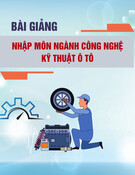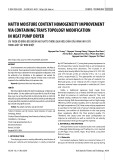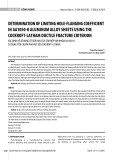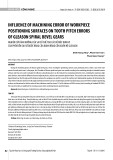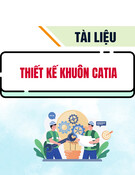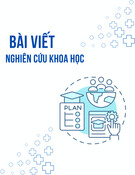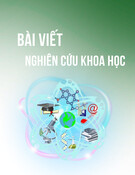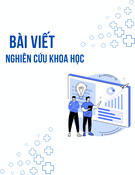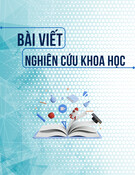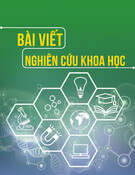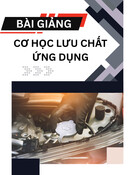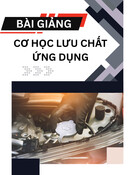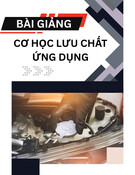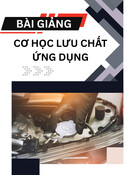
P-ISSN 1859-3585 E-ISSN 2615-9619 https://jst-haui.vn LANGUAGE - CULTURE Vol. 60 - No. 10 (Oct 2024) HaUI Journal of Science and Technology
37
THEME IN THE ENGLISH MECHANICAL ENGINEERING DISCOURSE: A SYSTEMIC FUNCTIONAL DESCRIPTION
ĐỀ NGỮ TRONG NGÔN BẢN KỸ THUẬT CƠ KHÍ TIẾNG ANH: MÔ TẢ CHỨC NĂNG HỆ THỐNG Vu Thi Mau1,*, Phan Thanh Quyen1, Hoang Tra My2 DOI: http://doi.org/10.57001/huih5804.2024.322 ABSTRACT This article examines the use of theme in English mechanical engineering (ME) discourse from systemic functional linguistics
(SFL) perspective developed
by Halliday and other systemists. By analyzing a variety of texts
including eight technical descriptions, seven research articles, and nine user manuals from the
field, the study explores how topical, interpersonal and textual themes, simple and multiple themes, marked and unmarked themes
, constant, linear themes
and derived ones (or split rhemes)
are employed to structure information, emphasize key concepts, enhance coherence and cohesion, and facilitate the
communication of technical knowledge. The paper highlights the interplay between ideational, interpersonal, and textual metafunctions within ME
discourse,
revealing how thematic choices contribute to the clear communication of technical content. The findings show a dominance of t
opical, simple, unmarked and
constant themes as well as demonstrate that theme selection in this kind of discourse not
only serves organizational purposes but also reflects the communicative
and functional needs of the technical discipline, ultimately facilitating the transmission of specialized knowledge to novice
s. Moreover, interpersonal, textual,
multiple, linear and derived themes appear more frequently in academic and instructional texts than in descriptive ones. This research also provide
s insights into
the linguistic strategies engineers use to structure discourse and offers a detailed functional description of them
atic patterns in technical communication and
presents implications for both practitioners and educators in the ME field. Keywords: Theme; rheme; thematic progression; English mechanical engineering discourse; systemic functional linguistics. TÓM TẮT Bài báo này trình bày nghiên cứu việc sử dụng đề ngữ trong diễn ngôn kỹ thuật cơ khí tiếng Anh từ góc nhìn của ngôn ngữ học chức năng hệ thống. Bằ
ng
cách phân tích nhiều loại ngôn bản thực tế bao gồm 8 bài mô tả kỹ thuật, 7 bài báo chuyên ngành và 9 hướng dẫn sử dụng thuộc lĩnh vực này, nghiên cứ
u khám
phá cách các đề ngữ chủ đề, liên nhân và ngôn bản, đề ngữ đơn và đa, đề ngữ nhấn mạnh và không nhấn mạnh, đề ngữ diễn tiến cố định, tuyế
n tính và phân
thuyết được sử dụng để cấu trúc thông tin, làm rõ các khái niệm chính, tăng cường tính mạch lạc và liên kết và hỗ trợ truyền đạt kiến thức kỹ thuậ
t. Bài báo nêu
bật mối quan hệ giữa các siêu chức năng tư tưởng, liên nhân và ngôn bản trong diễn ngôn kỹ thuật cơ khí, qua đó cho thấy các lựa chọn đề ngữ
đóng góp vào
việc truyền đạt nội dung kỹ thuật một cách rõ ràng. Kết quả cho thấy đề ngữ chủ đề, đơn, không nhấn mạnh và diễn tiến cố định đóng vai trò chủ đạo và việc lự
a
chọn đề ngữ trong thể loại ngôn bản này không chỉ phục vụ cho mục đích tổ chức ngôn bản mà còn phản ánh nhu cầu giao tiếp và chức năng của ngành, từ
đó
thúc đẩy việc truyền tải kiến thức chuyên ngành tới những người mới. Ngoài ra, tần suất các đề ngữ liên nhân, ngôn bản, đa, nhấn mạnh và diễn tiến tuyế
n tính
cũng như phân thuyết xuất hiện trong các văn bản học thuật và hướng dẫn nhiều hơn trong các văn bản mô tả. Nghiên cứu này cũng cung cấp một số hiểu biế
t
về các chiến lược ngôn ngữ mà các kỹ sư sử dụng để cấu trúc diễn ngôn và đưa ra mô tả chức năng chi tiết về các kiểu đề ngữ trong giao tiếp kỹ thuật và
đưa ra
những gợi ý cho cả những chuyên gia và các nhà giáo dục trong ngành kỹ thuật cơ khí. Từ khóa: Đề ngữ; thuyết ngữ; tiến triển đề ngữ; ngôn bản kỹ thuật cơ khí tiếng Anh; ngôn ngữ học chức năng hệ thống. 1School of Languages and Tourism, Hanoi University of Industry, Vietnam 2University of Languages and International Studies, Vietnam National University, Hanoi, Vietnam *Email: mauvt@haui.edu.vn Received: 06/9/2024 Revised: 24/10/2024 Accepted: 28/10/2024






